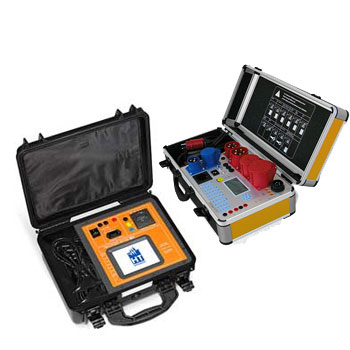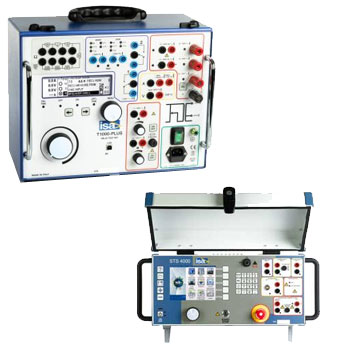
A diaphragm pressure gauge is a measuring device primarily used for measuring pressure. It consists of a fixed plate and a spring-loaded plate. The pressure to be measured acts on the spring-loaded plate, causing a displacement relative to the fixed plate. This displacement is then displayed as a measurement. In this article, we will discuss when it makes sense to use a diaphragm pressure gauge.
In which applications can a diaphragm pressure gauge be used?
A diaphragm pressure gauge can be used in many different applications. One of the most common applications is measuring the air pressure in car tires. A diaphragm pressure gauge is usually very accurate and can measure the air pressure in a tire very precisely. It can also be used in industrial applications to measure the pressure in a machine or system. A diaphragm pressure gauge is generally very reliable and can measure the pressure in a system very accurately.
The advantages of a diaphragm pressure gauge
Another advantage of a diaphragm pressure gauge is that it is very easy to use. It does not require a power supply and can be easily connected to the system to be measured. It is also very lightweight and portable, making it easy to use in various locations. This makes it a very versatile tool.
Another advantage of a diaphragm pressure gauge is that it is very accurate. It can measure the pressure in a system very precisely and is generally very reliable. It is also very sensitive and can measure very small pressure changes. This makes it a very useful tool in applications where high accuracy is required.
A diaphragm pressure gauge can also be used in applications where a high measurement frequency is required. It can provide measurements very quickly, making it ideal for applications where rapid measurements are necessary. It can also be used in applications where a high measurement resolution is required. It can measure very small pressure changes, making it ideal for applications where high measurement resolution is necessary.
Another advantage of a diaphragm pressure gauge is that it is generally very cost-effective. It is typically much cheaper than other types of pressure measuring devices, such as electronic pressure sensors. This makes it a very attractive tool for applications where a cost-effective measuring device is needed.
The disadvantages
However, there are also some disadvantages to using a diaphragm pressure gauge. One of the biggest disadvantages is that it is sensitive to environmental influences such as vibrations and temperature fluctuations. If not properly protected or used, this can lead to measurement errors. It is therefore important to properly protect and use the measuring device.
Another disadvantage of a diaphragm pressure gauge is that it is not suitable for all applications. In some applications, higher measurement accuracy is required than a diaphragm pressure gauge can provide. In these cases, other types of pressure measuring devices, such as piezoelectric or capacitive sensors, may be necessary to achieve higher measurement accuracy.
Another disadvantage is that diaphragm pressure gauges are generally not suitable for measuring liquids. Due to the structure of the device, liquids can enter the measuring device and damage it. For measuring liquids, other types of pressure measuring devices designed for this purpose must be used.
Conclusion
In summary, a diaphragm pressure gauge can be usefully employed in many different applications. It is very easy to use, very accurate, and cost-effective. It is ideal for applications where rapid measurement is required and high measurement accuracy is not necessarily required. However, there are also some disadvantages, such as sensitivity to environmental influences and unsuitability for measuring liquids. It is therefore important to understand the requirements of your application to decide if a diaphragm pressure gauge is the right measuring device for you.
- High overload safety, optionally 40, 100 or 400 bar due to the metallic pressure element limit stop, without liquid-filled measuring cell
- Wide choice of special materials
- Compatible with switch contacts
- Case and wetted parts from stainless steel
- Scale ranges from 0 … 16 mbar

 Datasheet Datasheet |
 User Manual User Manual |
 User Manual User Manual |
 User Manual User Manual |
- Case and wetted parts from stainless steel
- Wide choice of special materials
- High overload safety up to the 10-fold full scale value
- Process connection thread or open flange
- Scale ranges from 0 … 16 mbar

 Datasheet Datasheet |
 User Manual User Manual |
 User Manual User Manual |
 User Manual User Manual |
- Compatible with switch contacts
- Threaded or open flange process connection
- Scale ranges from 0 … 16 mbar
 Datasheet Datasheet |
 User Manual User Manual |
- Dead space free media chamber
- Excellent rinsing behaviour
- Helium leak tested, leak rate ≤ 10-9mbar · l/s
- Case and media chamber electropolished, surface roughness Ra ≤ 0.25 μm
- All ultra high purity gas fittings available
 Datasheet Datasheet |
 User Manual User Manual |
High resistance to overpressure Robust stainless steel case Higly suitable for extremly viscous or crystallizing media
 Datasheet Datasheet
|
Pressure gauges with diaphragm - stainless steel with or without glycerine filling.
 Datasheet Datasheet
|
- Compact, robust, easily cleanable design (patent, property right: DE102008042455)
- Dry measuring cell, no transmission fluid
- Flush, welded diaphragm
- Suitable for SIP and CIP, autoclavable version available
- Large selection of process connections
 Datasheet Datasheet |
 User Manual User Manual |
 User Manual User Manual |
- Integrated diaphragm element monitoring with status display (patent, property right: e.g. DE102016005568)
- Two barriers for secure separation of the process from the atmosphere
- Mechanical pressure transmission without transmission fluid
- Completely autoclavable, suitable for CIP and SIP
 Datasheet Datasheet |
 User Manual User Manual |
- Safety via mechanical pressure transmission
- Case and wetted parts in hygienic design
- Suitable for SIP and CIP, autoclavable version available
- Easy zero point setting
- High overpressure safety

 Datasheet Datasheet |
 User Manual User Manual |
- Mechanical pressure gauge with diaphragm element
- Compact design for minimal dead volume and reduced particle generation and entrapment
- Helium leak tested, leak rate ≤ 10-9 mbar · l/s
- Electropolished wetted parts, surfaces with Ra < 0.25 μm (Ra < 10 μin) for diaphragm element and measuring chamber
- Process connector components from electropolished 316L with metal sealing disc, orbital welded to measuring chamber
 Datasheet Datasheet |
- No configuration necessary due to "plug-and-play"
- Signal transmission per NAMUR
- Scale ranges from 0 ... 16 mbar
- Easy-to-read analogue display with nominal size 100 or 160
- Safety version "S3" per EN 837

 Datasheet Datasheet |
 User Manual User Manual |






















































































































































































